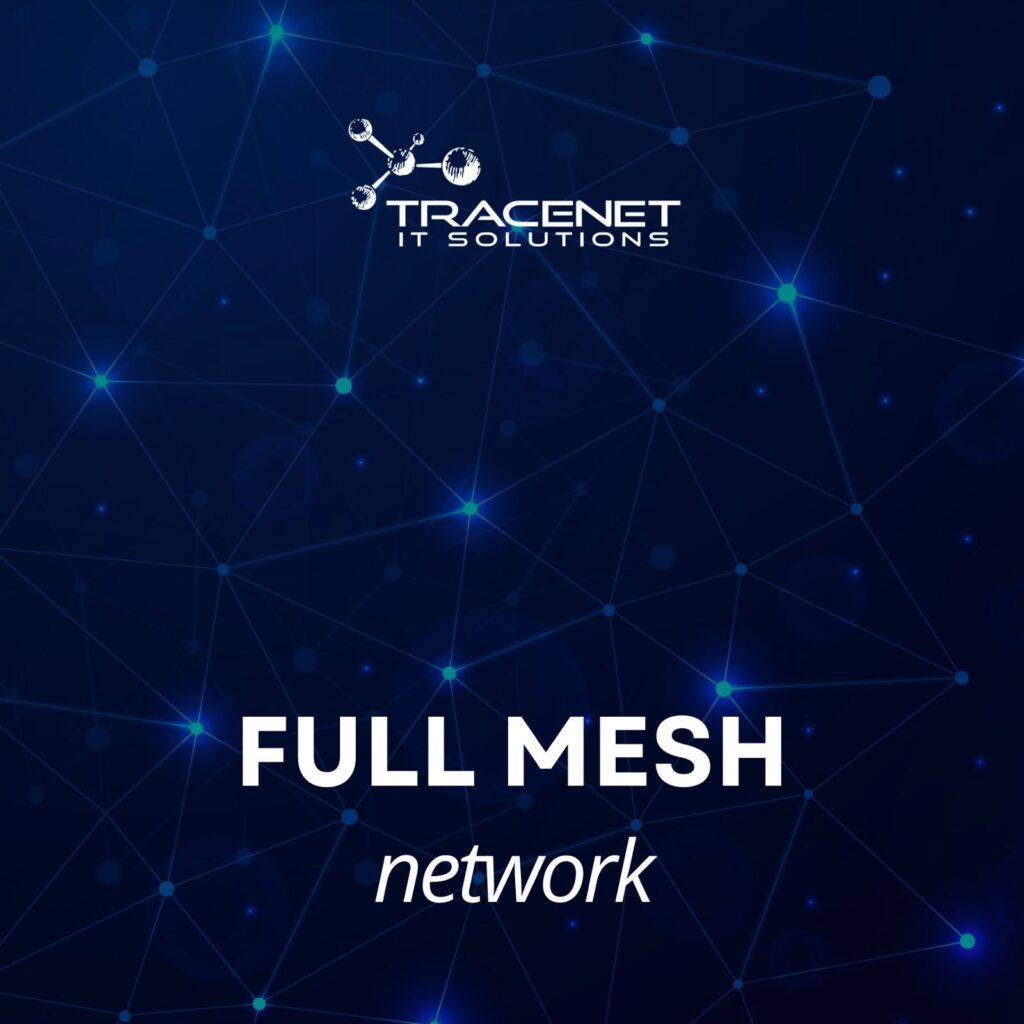Network connectivity plays a fundamental role in keeping a company’s operations efficient. In addition, ensuring secure data communication, without the risk of leaks, must also be a priority.
In this context, various network architectures have been developed to meet the specific needs of businesses, one of which is the Full Mesh Network. It is an approach capable of offering high resilience, low latency, and redundancy, making it a strategic choice for companies that cannot afford interruptions in communication.
The idea of a network where all devices are interconnected sounds promising, but is it viable? Apart from the obvious benefits, implementing a Full Mesh Network involves considerable challenges, such as high costs and the complexity of management.
In this article, we’ll explore how this architecture works, its advantages and the precautions needed to implement it efficiently in your IT environment. Check it out by reading this article to the end!
What is a Full Mesh Network?
A Full Mesh Network is a network topology where each node, or device, is directly connected to every other node on the network. A connection model that creates a mesh of interconnections, providing a highly redundant and resilient structure.
In other words, each device on the network has a direct link to all the others, guaranteeing multiple paths for communication between them. This interconnection means that the main characteristic of this topology is redundancy.
As all the devices are interconnected, communication can continue via other available paths. This ensures that the network remains operational, even if one of the links or devices fails.
In addition, the network has high availability, because if one path is congested or unavailable, data can be transmitted via other routes, avoiding interruptions or slow communication.
This architecture also promotes high resilience, since it does not depend on a central point for communication. This means that the failure of a specific node does not compromise the communication of the other nodes, since there will always be an alternative route for the data.
For this reason, Full Mesh Network is considered an effective solution for environments that require high reliability and continuity, such as critical communication systems and companies that cannot afford to suffer interruptions in their operations.
How does it work in practice?
The operation of a Full Mesh Network is based on the idea that all the devices (nodes) on the network are directly interconnected, as explained above. This means that each device has multiple direct links to all the other devices on the network, without relying on intermediate points.
In practice, the system can be implemented in two main ways, depending on the specific requirements of the network and the resources available. The two approaches are:
- Full Physical Mesh
Each device on the network has direct physical connections to all the other devices. This requires considerable cabling and ports on network equipment such as switches and routers.
For example, imagine a network with 5 devices. Each device needs 4 direct connections (one to each other device), which results in 20 connections in total, taking bidirectional connections into account. If the network grows to 10 devices, the required connections increase to 45.
This type of implementation is more common in smaller or high-performance networks, where extremely low latency and high availability are essential.
However, the cost and complexity increase rapidly as the network grows, due to the large number of cables and equipment required. In addition, the physical space to accommodate all the connections can become a problem in more compact environments.
- Logical Full Mesh
Logical Full Mesh is a more flexible and scalable implementation, which does not require direct physical connections between all the devices.
Instead, interconnectivity between nodes is guaranteed through dynamic routing protocols or VPNs (Virtual Private Networks). These methods allow devices to exchange data directly, even without requiring dedicated physical links between them.
In Logical Full Mesh, devices can be physically located in different parts of a network, and connectivity between them can be established virtually through routers and routing protocols, such as OSPF (Open Shortest Path First) or BGP (Border Gateway Protocol).
These protocols help determine the best routes for data traffic, adapting to changes in the network, such as a link failure, and redirecting data to other available routes efficiently.
A VPN can also create a virtual private network between devices, guaranteeing secure and encrypted communication between them, without the need for direct physical connections.
How is it implemented?
Implementing a Full Mesh Network requires planning and the right infrastructure. Some essential steps include:
- Network planning: assessing the need for Full Mesh and identifying the devices to be connected.
- Acquisition of suitable hardware: high-performance switches and routers capable of handling multiple simultaneous connections.
- Routing configuration: use of protocols such as OSPF, EIGRP and BGP to optimize data traffic between nodes.
- Monitoring and maintenance: implementation of monitoring tools to ensure continuous operation and detect faults quickly.
Precautions regarding Full Mesh Network
Although the Full Mesh Network offers significant advantages, such as high availability, improved performance, and resilience, its implementation requires attention to various factors and precautions. Before opting for this topology, it is important to consider the implications it can bring, especially concerning costs, complexity, and scalability. Let’s find out more about these below:
High cost
One of the main considerations when implementing a Full Mesh Network is the high cost. Each device on the network must be connected directly to all the other devices, which results in many links and, consequently, a large number of pieces of equipment needed, such as switches, routers, and cables.
In addition, the need to use more robust, high-capacity hardware to support this complex network can further increase costs.
These costs are not just limited to the initial implementation, but also to the ongoing infrastructure maintenance, which requires quality equipment and specialized technical support.
Complex configuration and management
Configuring a Full Mesh Network can be extremely complex. Due to the large number of connections between devices, configuring and managing each node becomes challenging, especially in large networks.
Each new device needs to be connected to all the other existing devices, significantly increases the number of configurations and adjustments required.
In addition, the network requires advanced technical knowledge to manage effectively, ensuring that links are correctly configured, that data is routed efficiently and that the network remains secure against failures and external threats.
Limited scalability
Although the Full Mesh Network is highly efficient in terms of redundancy and availability, it presents scalability challenges. As new devices are added to the network, configuration and management complexity grows exponentially.
For example, if a network with 5 devices already requires 10 direct connections (calculating the possible combinations), a network with 10 devices will require 45 connections. This exponential increase in connections creates an increasing number of links and points of failure, making the network more difficult to manage.
Over time, the number of devices on the network can become so large that the Full Mesh topology loses its effectiveness in maintenance and management, becoming impractical for extensive networks.
In environments with rapid growth needs, more scalable topology alternatives, such as Tree or Hierarchical Topology, may be more appropriate
Challenges in monitoring and diagnosis
In a Full Mesh Network, monitoring the network and identifying problems can be more complicated due to the large number of simultaneous connections.
If there is a fault on a link or device, diagnosis can require considerable effort, as the multiple alternative routes can mask the problem for a while, leading to difficulties in detecting and resolving faults.
The network needs sophisticated monitoring tools and techniques to ensure that performance is always optimized and that network integrity is maintained.
Conclusion: Is it worth investing?
Investing in a Full Mesh Network depends on the needs of the company or organization. If the environment requires extremely high availability, low latency and enhanced security, this topology may be the ideal choice.
However, if the priority is cost reduction and simplified scalability, other network architectures, such as star topology or partial mesh, maybe more viable options.
Before investing, it is essential to carry out a detailed analysis of business needs and available resources. When properly implemented, a Full Mesh Network can offer unparalleled benefits, guaranteeing performance and reliability for critical operations.



